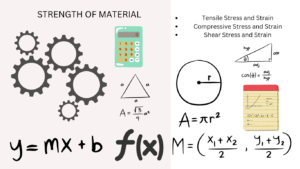What is Technical Communication?
In today’s rapidly advancing world, the need for clear, precise, and efficient communication is more crucial than ever. One of the most vital forms of communication in professional fields is technical communication. This specialized form of communication bridges the gap between complex technical information and the people who need to understand it. Whether you’re an engineer, scientist, business analyst, or even a general consumer using new technology, technical communication plays a critical role in helping you interact with technical content effectively.
Definition of Technical Communication
Technical communication refers to the process of conveying complex, technical information to a specific audience in a way that is clear, accurate, and usable. It is not just about writing manuals or instructions, though those are important examples. Instead, it encompasses a wide range of activities, including creating user guides, developing reports, preparing presentations, and even designing visual content like diagrams and charts.
The main purpose of technical communication is to simplify complicated technical ideas so that users can understand and apply them without confusion. It involves gathering information from experts, understanding it deeply, and presenting it in a structured, audience-friendly format.
The Importance of Technical Communication
Technical communication is essential for several reasons:
- Enhances Understanding: Many industries involve complex processes, tools, or technologies. Without effective communication, it becomes difficult for users to fully grasp how to operate equipment, follow procedures, or understand results.
- Promotes Safety: In fields such as engineering, healthcare, and aviation, accurate instructions are critical. A minor misinterpretation can lead to dangerous consequences. Technical documents ensure that safety protocols are followed and understood.
- Increases Efficiency: With clear documentation, teams work more effectively. They spend less time asking for clarifications and more time executing tasks.
- Supports Product Use: User manuals, installation guides, and FAQs help customers use products correctly, reducing frustration and minimizing support inquiries.
- Facilitates Knowledge Sharing: Technical communication helps transfer knowledge from experts to non-experts, ensuring that vital information is preserved and shared across teams or organizations.
Key Characteristics of Technical Communication
Technical communication has some unique features that distinguish it from other forms of communication:
- Purposeful: Every technical document is created with a clear goal, often to instruct, inform, or explain.
- Audience-Centered: Technical communicators tailor their message to the needs, background, and expectations of the audience.
- Clear and Concise: Technical content avoids ambiguity. The language is straightforward and the structure is logical.
- Accurate and Reliable: Facts, figures, and instructions in technical documents must be correct and trustworthy.
- Visual Support: Charts, tables, images, and diagrams are often used to enhance understanding.
Forms of Technical Communication
Technical communication is not limited to one type of document. Instead, it takes many forms depending on the situation and audience. Common examples include:
- User Manuals: Instructions for consumers on how to use a product or system.
- Technical Reports: Detailed documents analyzing specific topics, often used in engineering and scientific research.
- Standard Operating Procedures (SOPs): Step-by-step instructions for completing routine tasks.
- Proposals: Documents outlining plans or ideas to solve problems, often seeking approval or funding.
- Online Help Systems: Interactive guides and FAQs available on websites or apps.
- Presentations: Visual and verbal explanations given during meetings or conferences.
- Emails and Memos: Professional communications within organizations sharing updates or decisions.
The Process of Technical Communication
Creating high-quality technical content requires a thoughtful, organized process. Here’s a breakdown of the typical steps:
1. Audience Analysis
Before creating any document, it’s essential to understand who the audience is. What is their technical background? What do they need to know? What problems might they face?
2. Research and Data Collection
Next, gather all necessary information. This could involve interviewing subject matter experts (SMEs), reviewing existing documents, or conducting independent research.
3. Organization and Planning
With the data in hand, plan the structure of the document. Use headings, bullet points, and logical sequences to make the content easy to follow.
4. Writing
Start drafting the content, focusing on clarity, accuracy, and relevance. Use plain language where possible and avoid jargon unless the audience is familiar with it.
5. Visual Design
Incorporate visuals that support the text. Diagrams, flowcharts, and illustrations can make complex ideas easier to digest.
6. Editing and Proofreading
Review the draft to correct errors, improve flow, and ensure accuracy. Peer reviews and feedback from SMEs can enhance the quality.
7. Publishing and Distribution
Finally, deliver the document through appropriate channels, whether in print, online, or integrated into software.
Skills Required for Technical Communication
Being an effective technical communicator requires a blend of several skills:
- Writing Proficiency: The ability to express ideas clearly and logically.
- Technical Knowledge: Understanding the subject you’re communicating about is essential.
- Research Skills: Knowing how to gather and verify information.
- Visual Communication: Designing graphics and layouts that complement the text.
- Attention to Detail: Ensuring accuracy and consistency throughout the document.
- Collaboration: Working closely with engineers, developers, designers, and other professionals.
Technical Communication in Different Fields
Technical communication is used across various industries, each with its own unique needs:
- Engineering: Documenting designs, procedures, and project reports.
- Healthcare: Preparing medical guidelines, patient information leaflets, and research papers.
- Information Technology: Developing user manuals, software documentation, and technical support content.
- Finance: Creating reports, compliance documents, and investment proposals.
- Education: Producing instructional materials and e-learning courses.
The Future of Technical Communication
With rapid technological advancements, technical communication continues to evolve. Modern trends include:
- Interactive Content: Online help systems and tutorials that guide users step by step.
- Video Tutorials: Visual demonstrations that explain procedures more effectively than text alone.
- User-Centered Design: Developing content based on feedback and real-world user testing.
- Localization: Adapting content to suit different languages and cultures for global audiences.
- Artificial Intelligence: Automating some aspects of document generation and providing real-time language support.
Applications of Technical Communihttps://nobleswift.com/what-is-machine-design/cation
Technical communication is applied across various sectors:
- Engineering: Creating design documents, safety manuals, and equipment instructions.
- Information Technology: Writing software documentation, API guides, and system architecture reports.
- Healthcare: Producing medical guidelines, patient instructions, and research articles.
- Education: Developing instructional materials, course content, and e-learning modules.
- Business: Preparing business reports, proposals, and project documentation.
Conclusion
Technical communication is an indispensable part of modern industry and society. It bridges the gap between complex technical ideas and the people who need to understand and apply those ideas effectively. Whether it’s explaining how to operate machinery, documenting a scientific study, or providing guidelines for using software, technical communication ensures clarity, safety, and efficiency.
With the increasing complexity of technologies and the growing need for accurate, accessible information, the role of technical communication continues to expand. Skilled technical communicators play a crucial role in helping organizations succeed by making complicated information understandable, usable, and actionable. Thus, investing in strong technical communication practices is not just a necessity—it’s a strategic advantage in today’s competitive world.
For more information contact please




DFf Skscl uXG zBrQaQn vQjR
Hello sir,
Good afternoon 😊
How are you doing